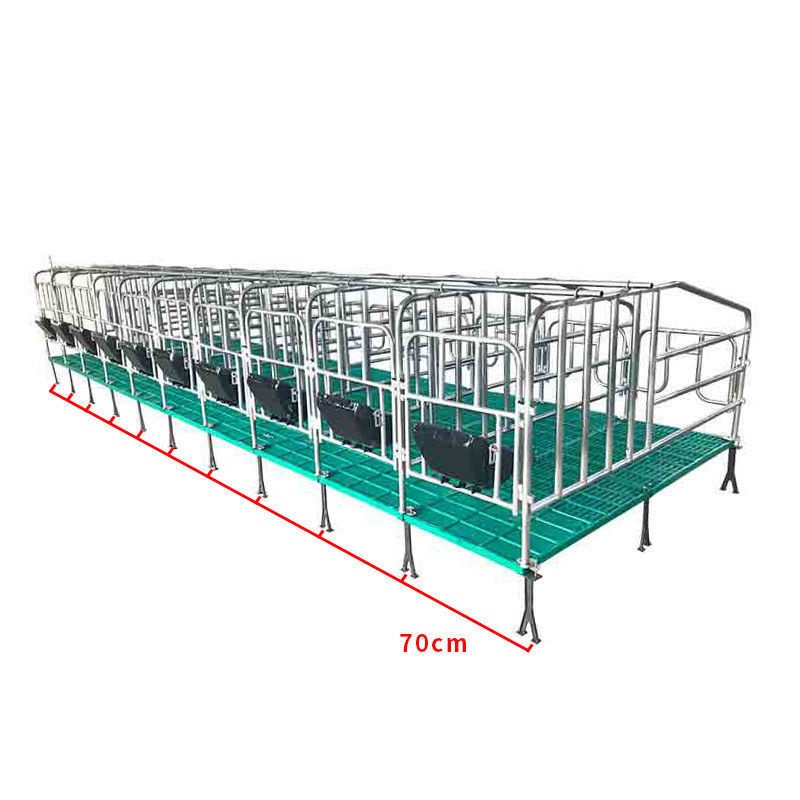Efficient Solutions for Commercial Chicken Layer Cages in Poultry Farming
Nov . 27, 2024 01:12 Back to list
Efficient Solutions for Commercial Chicken Layer Cages in Poultry Farming
The Importance of Commercial Chicken Layer Cages in Poultry Farming
The poultry industry plays a critical role in the global food supply, particularly in providing protein through eggs. Among the various methods of raising chickens, commercial chicken layer cages have emerged as a predominant farming practice. These systems are designed to optimize egg production and improve the overall management of laying hens. In this article, we will explore the significance of commercial chicken layer cages, their advantages and disadvantages, and their impact on the welfare of hens, production efficiency, and environmental sustainability.
Understanding Commercial Chicken Layer Cages
Commercial chicken layer cages are enclosures specifically designed for housing hens that are raised primarily for egg production. These cages are usually stacked vertically and can hold multiple birds within a single unit, allowing poultry farmers to maximize their use of space. The design of commercial layer cages varies, but they typically include features such as sloped floors to facilitate egg collection, feed and water access, and sufficient ventilation.
Advantages of Layer Cages
1. Efficiency of Space One of the primary benefits of commercial layer cages is their ability to maximize space. Given that chickens are raised in vertical stacks, farmers can house significantly more birds in a smaller footprint. This efficiency is particularly important in urban and suburban areas where land availability is limited.
2. Increased Production Layer cages help optimize egg production rates. The controlled environment allows for consistent access to food, water, and light, which can enhance the hens' laying frequency. Additionally, these systems reduce the incidence of egg breakage by providing a designated area for laying eggs, increasing the overall yield for farmers.
3. Ease of Management Chicken layer cages simplify the management of flocks. Farmers can quickly monitor the health and productivity of their hens, streamline feeding, and conduct health checks with minimal disruption. Such operational efficiency translates to more time for farmers to focus on other aspects of their business.
4. Disease Control The design of layer cages can help limit the spread of diseases among birds. Because the hens are housed in designated spaces, the risk of cross-contamination is reduced. This disease control is advantageous for maintaining a healthy flock and minimizing losses due to illness.
Disadvantages and Welfare Concerns
commercial chicken layer cage

Despite their advantages, there are significant concerns regarding hen welfare associated with the use of commercial chicken layer cages. Critics argue that conventional battery cages can lead to issues such as
1. Limited Mobility In traditional battery cage systems, hens are often confined to small spaces with minimal room for movement. This restriction can result in physical and psychological stress, leading to behavioral issues such as feather pecking and aggression.
2. Social Interaction Chickens are social animals and thrive on social interactions. The confinement within cages can inhibit natural behaviors, including nesting, perching, and foraging, leading to decreased overall welfare.
3. Public Perception The use of battery cages has faced significant backlash from animal rights organizations and welfare advocates, prompting some consumers to seek out alternatives such as free-range or cage-free eggs. This shift in consumer preference has forced many poultry producers to reevaluate their farming practices.
Sustainable Practices and the Future
As the poultry industry evolves, there is a growing emphasis on sustainability and animal welfare. Many producers are transitioning away from traditional battery cages to enriched cages or free-range systems, which allow hens more space and opportunities to engage in natural behaviors. Enriched cages, for instance, provide features such as nesting boxes, perches, and scratching areas, improving the welfare of the birds while still maintaining some of the production efficiency seen in conventional systems.
Furthermore, advancements in technology and farming practices are helping to reconcile the need for high production rates with animal welfare considerations. Automated feeding systems, climate control, and smart monitoring technologies can help farmers provide better care for their flocks, ensuring healthier hens and, consequently, higher-quality eggs.
Conclusion
Commercial chicken layer cages have significantly transformed the poultry industry, providing a mechanism for efficient egg production while presenting challenges regarding animal welfare. As consumer awareness and demand for ethical farming practices continue to grow, poultry producers must adapt and innovate to balance productivity with the well-being of their hens. The future of poultry farming lies in striking this balance, ensuring sustainability and animal welfare while meeting the global demand for eggs.
-
Automatic Feeding Line System-Pan Feeder Nipple Drinker|Anping County Yize Metal Products Co., Ltd.
NewsJul.29,2025
-
Hot Sale 24 & 18 Door Rabbit Cages - Premium Breeding Solutions
NewsJul.25,2025
-
Automatic Feeding Line System Pan Feeder Nipple Drinker - Anping County Yize Metal Products Co., Ltd.
NewsJul.21,2025
-
Automatic Feeding Line System Pan Feeder Nipple Drinker - Anping County Yize Metal Products Co., Ltd.
NewsJul.21,2025
-
Automatic Feeding Line System - Anping Yize | Precision & Nipple
NewsJul.21,2025
-
Automatic Feeding Line System - Anping Yize | Precision & Nipple
NewsJul.21,2025






